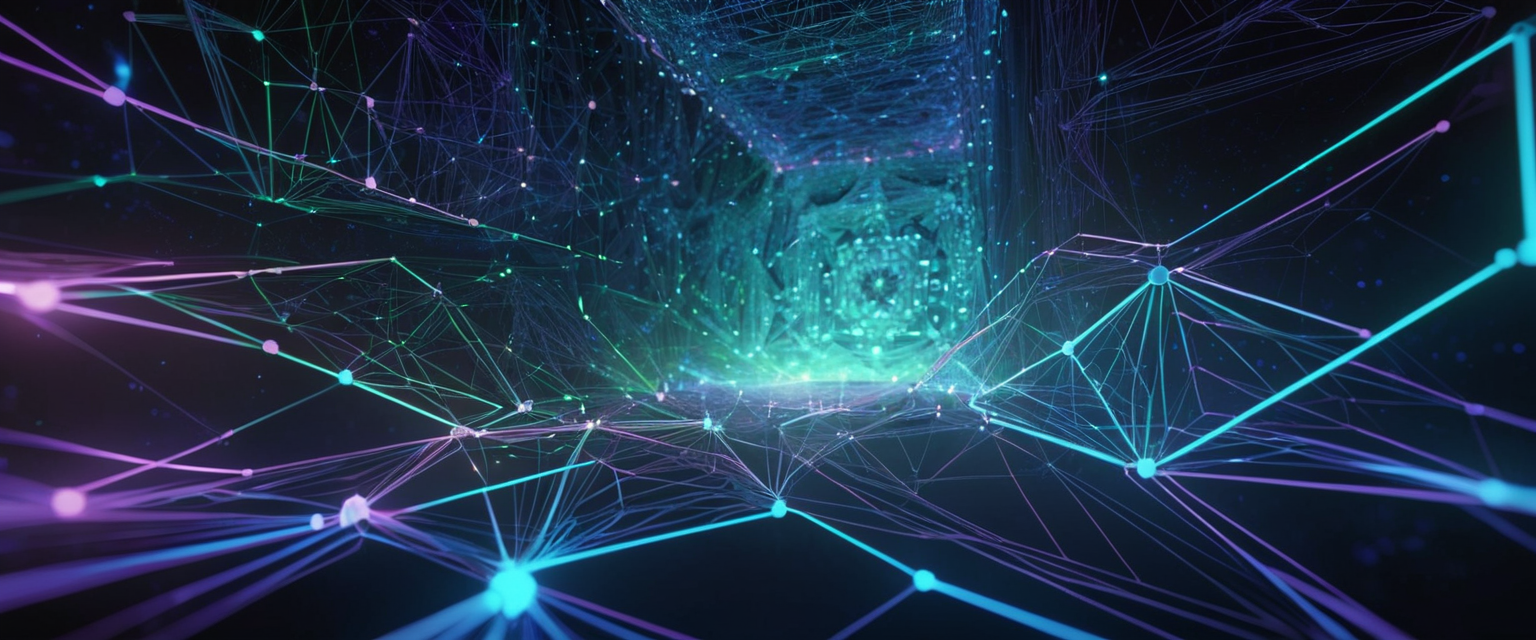
Dark web mentions represent one of the most critical early warning indicators of personal information exposure in the contemporary cybersecurity landscape, signaling that an individual’s sensitive data has been discovered, aggregated, or actively traded within hidden digital marketplaces where cybercriminals operate with relative anonymity. When an individual receives notification that their personal information has been mentioned or discovered on the dark web, this event constitutes far more than a mere data point—it represents a fundamental compromise of digital identity that requires immediate understanding and swift remediation. The implications of dark web mentions extend across multiple dimensions of personal security, from financial vulnerability to identity theft risks, and understanding precisely what these mentions signify has become essential for anyone seeking to maintain control over their digital footprint. This comprehensive analysis examines the multifaceted nature of dark web mentions, exploring their origins, meanings, consequences, and the strategic approaches individuals and organizations can employ to detect and respond to such exposures.
Understanding the Dark Web Ecosystem and the Infrastructure of Data Distribution
The dark web represents a carefully encrypted and deliberately hidden segment of the internet that exists fundamentally separate from the indexed, searchable surface web that most internet users navigate daily. This concealed network operates through specialized software such as the Tor browser, which routes internet traffic through multiple encrypted layers to obscure the user’s identity and location, creating an environment where anonymity is not merely possible but systematically engineered into the architecture itself. While the dark web emerged from legitimate projects designed to protect journalists, activists, and individuals living under oppressive regimes from surveillance and censorship, it has evolved into a thriving underground economy where stolen data, hacking tools, illegal drugs, weapons, and counterfeit documents are openly exchanged. The distinction between the dark web and the broader deep web—which encompasses all internet content not indexed by standard search engines, including legitimate password-protected systems like email accounts and financial institutions—remains crucial for understanding the specific risks posed by dark web activity. Unlike the deep web, which primarily contains protected private information and legitimate databases, the dark web has become synonymous with illicit activity, with recent estimates suggesting that approximately 75 percent of dark web sites function as marketplaces for illegal goods and services.
The infrastructure supporting dark web mentions operates through sophisticated marketplace platforms that function structurally similar to legitimate e-commerce sites but facilitate entirely illicit transactions. These dark web marketplaces such as Abacus Market, STYX, Brian’s Club, Russian Market, BidenCash, WeTheNorth, and TorZon—which have emerged or dominated as of 2025—employ features including search functionality, vendor ratings, escrow services, and customer reviews to facilitate transactions while maintaining the anonymity of both buyers and sellers. According to available threat intelligence, Abacus Market alone boasted approximately 40,000 product listings and commanded a market value around $15 million as of late 2024, before the platform was taken down in mid-2025, representing the scope and scale of commercial activity in these underground spaces. The financial stakes are staggering; a 2023 report documented $1.7 billion in dark web sales in a single year alone, with that figure projected to increase substantially as cybercriminals refine their operational methodologies. Individual cybercriminals engaged in selling stolen data can earn between $45,000 and $2.5 million annually simply from monetizing compromised information, illustrating the profound economic incentives driving data theft operations.
Types of Dark Web Mentions and What They Reveal About Data Exposure
A dark web mention fundamentally represents evidence that an individual’s personal information has been discovered in locations where cybercriminals congregate to buy, sell, discuss, or trade sensitive data. These mentions manifest across multiple distinct formats and contexts within the dark web ecosystem, each carrying different implications regarding the scope, type, and velocity of potential harm. Understanding the taxonomy of dark web mentions becomes essential for comprehending the precise nature of one’s exposure and determining appropriate response mechanisms.
When dark web monitoring services detect an individual’s email address appearing in connection with a data breach, this mention typically indicates that the email has been included in a compromised database that has been extracted from a legitimate organization and subsequently made available for purchase or distribution on underground forums and marketplaces. Email mentions represent among the most commonly detected dark web exposures, as email addresses function as primary identifiers across virtually all online platforms and services that individuals utilize. The significance of an email mention extends beyond the disclosure of the email itself; it indicates that cybercriminals now possess a verified contact point that can be leveraged for targeted phishing campaigns, spear-phishing attacks, social engineering schemes, and account takeover attempts. An individual whose email address appears on the dark web faces substantially elevated risk that this information will be utilized as an entry point for more sophisticated attacks designed to compromise related accounts, particularly if the same email address and password combination has been reused across multiple platforms.
Social Security Number mentions represent a substantially more serious category of dark web exposure, carrying profound implications for identity theft and long-term financial harm. When an individual’s Social Security Number is discovered being actively traded on dark web marketplaces, it indicates that cybercriminals possess a master key to an individual’s financial identity. A Social Security Number sells for remarkably little on dark web markets—typically between $1 and $4 per number—yet its utility to criminal actors is disproportionately valuable. Armed with an individual’s Social Security Number, cybercriminals can apply for loans, open credit accounts, file fraudulent tax returns, apply for government benefits, and perpetrate sophisticated identity theft schemes that can take months or years to fully resolve. The Federal Trade Commission recommends that individuals whose Social Security Numbers have been exposed on the dark web immediately place fraud alerts and security freezes on their credit files, recognizing the elevated risk of account creation fraud that SSN exposure represents.
Credit card number mentions denote that payment card information has been extracted, either through data breaches affecting merchants or financial institutions, or through malware infections targeting consumers directly. On dark web marketplaces, credit card information is typically priced between $5 and $240 depending on multiple factors including the card’s credit limit, whether the associated account remains active, and whether additional personally identifiable information accompanies the card number. However, a complete “fullz” package containing not merely a credit card number but also the cardholder’s name, address, date of birth, phone number, and often Social Security Number can command substantially higher prices, ranging from hundreds to thousands of dollars depending on the comprehensiveness of the data package and market demand. When an individual receives notification that their credit card information has been mentioned on the dark web, this discovery typically preceded by weeks or months the fraudulent transactions that may appear on their accounts, providing a crucial window during which the individual can proactively protect themselves.
Login credential mentions represent a particularly insidious category of dark web exposure, carrying implications that extend far beyond the particular service from which the credentials originated. When usernames and passwords are discovered together on dark web forums and marketplaces—often aggregated into files called “stealer logs” captured by infostealer malware such as RedLine, Vidar, Lumma, RisePro, and Stealc—cybercriminals gain direct access to the accounts themselves. The danger escalates substantially when individuals have engaged in password reuse across multiple platforms, a practice so widespread that Verizon’s 2025 Data Breach Investigation Report identified that 88 percent of web application attacks initiated with stolen credentials. Once cybercriminals possess valid login credentials for one platform, they frequently conduct credential stuffing attacks—systematically attempting to use the same username and password combination across hundreds or thousands of alternative platforms—in hopes of gaining access to additional accounts.
Dark web mentions of medical records and healthcare data represent specialized exposures carrying particular severity due to the comprehensive nature of the information being traded. Medical information including patient histories, insurance details, diagnoses, prescribed medications, and treatment information commands premium prices on dark web marketplaces—typically $250 or more per record. Healthcare data proves particularly valuable to cybercriminals because, unlike credit card information which can be canceled and replaced, medical records persist and contain deeply personal information spanning years or decades of health history. An individual whose healthcare data appears on the dark web faces risk not merely of identity theft but of medical fraud, where criminals file false insurance claims, obtain prescription medications under the victim’s name, receive medical services charging them to the victim’s insurance, or engage in blackmail schemes leveraging sensitive health information.
Financial account information mentions encompass not merely credit card data but full banking credentials, investment account access information, and cryptocurrency wallet details. Bank account details sell for between $30 and $4,255 depending on the apparent account balance and accessibility of the account, while cryptocurrency account credentials command prices between $20 and $2,650. When an individual’s banking information appears on the dark web, cybercriminals gain potential access to direct fund transfers, which unlike credit card fraud can result in immediate, difficult-to-reverse fund removal from legitimate savings and checking accounts.
How Personal Information Appears on the Dark Web and the Pathways of Exposure
Understanding the mechanisms through which personal information reaches the dark web becomes essential for comprehending what dark web mentions signify and identifying points at which preventative interventions might prove effective. The pathways through which data transitions from secure corporate systems to underground marketplaces are multiple and evolving, reflecting the sophisticated arsenals that cybercriminals employ.
Data breaches represent the primary mechanism through which massive quantities of personal information become available on the dark web, with catastrophic breaches exposing millions of individuals’ records to subsequent trading on underground forums. When cybercriminals successfully infiltrate a company’s systems and extract databases containing customer information, employee records, or financial data, they typically attempt to monetize their theft by offering the stolen information for sale on dark web marketplaces within days or weeks of the initial breach. The 2024 National Public Data breach, which exposed nearly three billion records of 170 million people across the United States, United Kingdom, and Canada, exemplifies the scale at which modern data breaches now operate. Following such breaches, individuals frequently discover their information appearing on dark web forums where it is aggregated with records from other compromised databases, creating comprehensive identity packages that prove particularly attractive to identity thieves.
Phishing attacks and social engineering schemes represent a second major pathway through which personal information reaches the dark web. Through targeted phishing campaigns, cybercriminals trick individuals into disclosing sensitive information by creating fraudulent websites mimicking legitimate services, sending deceptive emails appearing to originate from trusted organizations, or engaging in social engineering tactics that manipulate individuals into voluntarily providing credentials or personal information. The information obtained through these social engineering attacks is subsequently aggregated and sold on dark web marketplaces, where it becomes available to other cybercriminals for exploitation.
Malware infections, particularly infostealer malware, provide cybercriminals with direct access to victims’ stored credentials, browsing history, cryptocurrency wallets, and cached personal information stored on infected devices. The proliferation of infostealer malware as a service has substantially lowered the barrier to entry for cybercriminals seeking to harvest personal information at scale, with infostealer malware available for as little as $100 per month on dark web marketplaces. Verizon’s 2025 Data Breach Investigation Report revealed that 78 percent of breached companies had corporate credentials leaked in stealer logs within six months before or after their breach, indicating the substantial role infostealer malware plays in contemporary data compromise scenarios. Stealer logs captured by malware such as RedLine, which accounted for 44 percent of all stealer logs found on major dark web and Telegram channels as of 2025, are then uploaded to dark web marketplaces where they are sold to other criminals for further exploitation.
Insider threats represent a third pathway through which personal information reaches the dark web, with disgruntled employees, contractors, or individuals with privileged system access deliberately exfiltrating data for financial gain. These insider threats prove particularly dangerous because employees often possess legitimate access to sensitive information and the technical knowledge to bypass security systems without triggering alerts. An insider threat can result in the theft of millions of customer records or proprietary corporate information, which is then offered for sale on dark web forums.
Human error and misconfiguration contribute substantially to unintended exposure of personal information that subsequently appears on the dark web. Employees may inadvertently email sensitive information insecurely, misconfigure cloud storage permissions allowing unauthorized access, or store passwords in easily discoverable locations, creating vulnerabilities that cybercriminals can exploit to access and extract personal data. Additionally, some personal information becomes available on the dark web not through direct theft but through aggregation of data already available through public records, people-finder websites, social media profiles, and other semi-public sources that cybercriminals scrape and compile into comprehensive identity packages.

The Implications and Risks Associated with Dark Web Mentions
A dark web mention carries profound implications that extend across multiple dimensions of personal security, financial stability, and digital identity. Understanding these implications enables individuals to appreciate the seriousness of their exposure and motivates appropriate response actions.
The most immediate risk associated with a dark web mention is identity theft, wherein cybercriminals utilize the exposed information to impersonate the victim and commit fraud in their name. Identity theft manifests across multiple distinct forms, each carrying different consequences. New account fraud occurs when cybercriminals use stolen personal information to apply for credit cards, loans, bank accounts, or other financial products in the victim’s name, with the resulting fraudulent accounts and charges appearing on the victim’s credit report and potentially destroying their credit score. Account takeover fraud involves cybercriminals using stolen credentials to gain unauthorized access to existing accounts, where they may drain bank balances, steal cryptocurrency, access sensitive personal information, or use the compromised account to launch further attacks. Medical identity fraud occurs when criminals use healthcare information to obtain medical services or prescription medications in the victim’s name, potentially affecting the victim’s health records and medical coverage. Tax refund fraud involves criminals filing fraudulent tax returns in the victim’s name to claim refunds they are not entitled to.
Financial fraud represents a second major risk category associated with dark web mentions, wherein cybercriminals utilize financial information to conduct unauthorized transactions and steal funds from legitimate accounts. When credit card information appears on the dark web, cybercriminals may conduct fraudulent transactions, make unauthorized online purchases, or clone physical cards for use in retail settings. When banking information is exposed, cybercriminals may conduct direct fund transfers from checking and savings accounts, potentially draining accounts before victims discover the unauthorized activity. Cryptocurrency account mentions prove particularly concerning because transactions conducted with stolen cryptocurrency credentials are substantially more difficult to reverse than traditional financial fraud, often resulting in permanent loss of funds.
The psychological and reputational dimensions of dark web mentions extend beyond the immediate financial risks and encompass damage to personal reputation and emotional distress. An individual whose personal information appears on the dark web experiences violation of privacy, anxiety regarding potential future fraud, and the time-consuming burden of managing account security and fraud remediation efforts. Additionally, if an individual discovers that their information has been exposed on the dark web in association with a particularly sensitive context—such as healthcare data revealing private medical conditions, or intimate photographs—the reputational and emotional damage can prove severe.
The cascading risks associated with dark web mentions warrant particular attention. Once an individual’s information appears on the dark web, it frequently remains available indefinitely and is frequently copied and redistributed across multiple marketplaces and forums, making complete removal impossible. This permanence means that the risk window extends not merely days or weeks but potentially years, during which cybercriminals may exploit the exposed information for various fraudulent purposes. Moreover, data on the dark web is frequently aggregated and combined with other compromised information, creating comprehensive identity packages that prove particularly attractive to sophisticated identity thieves.
Monitoring and Detection of Dark Web Mentions: Technologies and Methodologies
Dark web monitoring represents the proactive process of continuously scanning hidden areas of the internet to detect if an individual’s personal information has been exposed, compromised, or is actively being traded by cybercriminals. This monitoring capability has become essential because the dark web’s structure and anonymity mechanisms make it impossible for individuals to independently search for their information without exposing themselves to substantial risk.
Dark web monitoring services operate through multiple complementary technologies designed to penetrate the hidden layers of the internet and identify compromised information. Specialized crawlers and automated bots navigate the dark web, accessing Tor-protected sites, private forums, and illicit marketplaces that standard search engines cannot reach. These crawlers operate continuously, 24/7, scanning for new data dumps, forum discussions, marketplace listings, and other contexts where stolen personal information is traded or discussed. When potential matches are identified, artificial intelligence and machine learning algorithms analyze and verify the discovered data to confirm genuine exposure, filtering out irrelevant information and reducing false positives that might otherwise overwhelm users with inconsequential alerts.
The scope of monitoring conducted by premium dark web monitoring services proves remarkably comprehensive. Services such as Experian scan 600,000 dark web pages daily, while advanced enterprise solutions monitor millions of sites for specific information such as corporate email addresses or general information including company names and industry classification. This continuous scanning capability proves essential because data appearances on the dark web are not static events; information may surface, be delisted, resurface on different platforms, or be aggregated with additional data in ways that create new patterns of risk.
The alert process represents a critical component of dark web monitoring systems, transforming raw technical detection into actionable intelligence that enables individuals to respond appropriately to exposure. When an individual’s information is detected on the dark web, monitoring services typically send alerts via multiple channels including email, SMS messages, mobile application notifications, and dashboard alerts, ensuring that the individual receives notification through their preferred communication methods. These alerts provide not merely notification of exposure but context regarding the source of the breach, the types of information exposed, the dark web marketplace or forum where the information was discovered, and the original company or service from which the information was stolen.
Leading dark web monitoring providers differentiate their offerings through the comprehensiveness of their coverage, the speed at which they detect exposures, and the quality of their verification and alert processes. LifeLock’s Dark Web Monitoring service continuously scours the dark web for traces of personal information and notifies users of any findings, utilizing sophisticated monitoring technology and advanced algorithms to scan hidden and unindexed areas of the internet for email addresses, Social Security numbers, and credit card details. Bitdefender Digital Identity Protection immediately begins mapping a user’s digital footprint upon activation, conducting an “Accuracy Check” to validate that monitored identities actually belong to the user, then begins automatically combing through data repositories on darknets looking for personal information associations with the user’s identity. Google’s dark web report functionality, available through Google Search, allows users to set up monitoring profiles to check whether their personal information has been exposed in breaches, with the service verifying submitted information through one-time verification codes before adding data to monitoring profiles.
The evolution of dark web monitoring has incorporated advanced artificial intelligence and machine learning capabilities that improve detection accuracy and reduce response times. Some services now employ AI-powered detection that recognizes suspicious patterns more rapidly and effectively than human analysts could achieve, with AI algorithms capable of identifying exposed data at considerably faster speeds in real time to mitigate risks. Microsoft Defender’s dark web monitoring functionality intelligently associates monitored identity assets with discovered breaches, automatically aggregating discovered information into incident alerts even when users didn’t explicitly add particular data elements for monitoring.
Strategic Response and Remediation Following Dark Web Mentions
When an individual receives notification that their personal information has been mentioned on the dark web, the appropriate response becomes critical for minimizing potential harm and regaining control over their digital identity. Understanding the recommended sequence of actions enables individuals to implement protective measures systematically and effectively.
The most immediate action following a dark web mention involves changing passwords for any potentially compromised accounts, particularly for the service or website from which the credentials were stolen. This step proves essential because if cybercriminals have obtained login credentials through a data breach or stealer log, they may attempt to access the associated account or conduct credential stuffing attacks on other platforms where the individual has reused the same or similar passwords. Recommended practice involves creating entirely unique, strong passwords for each online account rather than reusing passwords across platforms, even with minor variations such as adding numbers or special characters, because cybercriminals sophisticated enough to obtain one password are likely sophisticated enough to recognize minor variations. Utilizing a password manager to generate, store, and auto-fill complex, unique passwords for each account substantially reduces the cognitive burden of maintaining distinct credentials while improving security posture.
Multi-factor authentication activation represents a second critical protective step, providing an additional layer of security that prevents attackers from accessing accounts even when they possess valid login credentials. Multi-factor authentication typically requires users to provide a second form of verification beyond passwords—such as a code generated by an authenticator application, a biometric factor such as fingerprint recognition, or a hardware security key—before granting access to accounts. Enabling multi-factor authentication on all accounts offering this capability substantially reduces the risk of account takeover even when passwords have been compromised, as attackers would need to compromise additional authentication factors to gain unauthorized access.
Monitoring financial statements and credit reports for unauthorized activity represents an essential ongoing response to dark web mentions, particularly when financial information such as credit card numbers or banking credentials have been exposed. Individuals whose financial information appears on the dark web should carefully review bank statements, credit card statements, and investment account statements for any transactions they do not recognize. Any suspicious transactions should be reported immediately to the relevant financial institution, which can cancel compromised cards, reverse unauthorized charges, and issue replacement cards or accounts. Additionally, individuals should obtain free credit reports from each of the three major credit bureaus—Equifax, Experian, and TransUnion—to examine for evidence of fraudulent account creation in their names.
Placing fraud alerts and security freezes on credit files provides additional protective mechanisms when dark web exposure includes Social Security Numbers or other information suitable for opening new credit accounts. A fraud alert notifies creditors and lenders that they should contact the individual directly to verify their identity before extending credit, making it more difficult for fraudsters to open new accounts in the victim’s name. A credit freeze is an even more restrictive measure that completely blocks access to an individual’s credit report unless they explicitly authorize access, preventing fraudsters from opening new accounts entirely because creditors cannot access the credit file necessary to make lending decisions.
For more serious exposures involving Social Security Numbers or comprehensive identity information packages, individuals may consider filing an identity theft report with the Federal Trade Commission and potentially contacting local law enforcement to file a police report. These reports create official documentation of the identity theft that can be used when disputing fraudulent accounts or credit inquiries, and provide guidance on recovery steps recommended by the FTC.
Importantly, individuals should recognize that no remediation steps can guarantee complete removal of their information from the dark web, as the decentralized, anonymous structure of the dark web makes it impossible to contact marketplace administrators or forum moderators to demand data removal. Once personal information circulates on the dark web, it frequently persists indefinitely and is often copied across multiple marketplaces and forums, creating a permanent record that cybercriminals can access at any point in the future. Instead of pursuing impossible removal efforts, individuals should focus on continuous monitoring and aggressive protective measures that minimize the damage that could result if exposed information is exploited.

The Dark Web Marketplace Ecosystem and Commercial Structures
Understanding the organizational structures, commercial practices, and specialized marketplaces comprising the dark web ecosystem provides crucial context for interpreting what dark web mentions signify and recognizing the sophistication of the criminal enterprises trading in stolen personal information.
The leading dark web marketplaces as of 2025 function as comprehensive platforms offering stolen data, hacking tools, malware, and virtually every category of illicit good imaginable. Abacus Market, which dominated English-language dark web commerce until its mid-2025 takedown, operated as a “one-stop shop” for illicit goods with over 40,000 product listings and an estimated market value around $15 million, functioning essentially as the Amazon of the dark web for its user base. STYX Market emerged in 2023 as a specialized marketplace focused specifically on financial fraud and stolen financial data, attracting numerous fraudsters seeking stolen financial information, money laundering services, and related offerings. Brian’s Club specializes in credit card data trafficking, functioning as a dedicated marketplace for stolen payment card information. Russian Market, established before 2020, serves as a major venue for trading stolen data, hacking tools, and access credentials, particularly attracting Russian-language users. WeTheNorth, which survived several law enforcement takedown attempts through careful operational security and community reputation management, maintains strict content policies prohibiting particularly egregious crimes while facilitating the broader dark web commerce in stolen data and other illicit goods. TorZon Market represents an emerging competitor in the dark web marketplace space, positioning itself as a successor to legacy marketplaces taken down by law enforcement.
Beyond traditional marketplaces, dark web forums and specialized communication platforms play crucial roles in the trading of stolen personal information. Forums such as XSS (formerly DaMaGeLaB), Nulled.to, BreachForums (before its 2022 shutdown), LeakBase, DarkForums, and RAMP function as discussion platforms where threat actors exchange stolen credentials, stealer logs, corporate access credentials, and information about newly discovered data breaches. These forums typically maintain tiered membership structures where premium members gain access to exclusive leaked datasets, private channels with fresher data, and specialized services. The volume of activity on these forums proves staggering; LeakBase, for instance, maintains a continuously updated archive of leaked databases updated with both older breaches and newly surfaced data, functioning as both marketplace and discussion hub. RAMP gained prominence by positioning itself as a venue specifically welcoming Ransomware-as-a-Service (RaaS) groups under its “partners program,” facilitating ransomware operations and recruitment.
Within these dark web ecosystems, specialized categories of stolen data have emerged as particularly high-value commodities. Stealer logs—which capture login credentials, browser cookies, cryptocurrency wallets, and other sensitive information harvested by infostealer malware—represent among the most actively traded data types, with stealer log data frequently reorganized, repackaged, and resold across multiple venues. “Fullz” packages—comprehensive compilations of complete personal information including name, address, date of birth, Social Security Number, email address, phone number, and payment card details—command premium pricing on dark web marketplaces due to their completeness and suitability for identity theft operations. Credit card data sells for between $5 and $120 depending on card balance and verification status, while complete identity packages can fetch hundreds or thousands of dollars. Compromised corporate credentials representing initial access to business networks are particularly sought after, selling for between $2,000 and $4,000 depending on the target organization’s size and industry.
The payment mechanisms facilitating dark web commerce rely almost exclusively on cryptocurrencies, particularly Bitcoin and Monero, which provide pseudonymous transaction capabilities superior to traditional financial systems for criminals seeking to avoid detection. To further obscure transaction trails and complicate law enforcement tracking, cybercriminals employ mixing services and tumbling techniques that obfuscate the transaction trail, making it substantially more difficult for investigators to connect illicit payments to specific individuals or organizations.
Proactive Protection and Prevention Strategies
While dark web monitoring provides crucial detective capabilities for identifying when personal information has been compromised, comprehensive protection requires implementing proactive measures designed to prevent personal information from reaching the dark web in the first place.
Strong password practices represent a foundational protective measure, with cybersecurity experts recommending that individuals maintain unique, complex passwords for each online account rather than reusing passwords across multiple services. Password managers such as LastPass, 1Password, or Bitwarden enable individuals to maintain dozens or hundreds of unique, complex passwords while only requiring memorization of a single master password. Additionally, regularly updating passwords—particularly for high-value accounts such as email, banking, and financial services—reduces the impact if credentials become compromised through undetected breaches.
Secure browsing practices prove essential for preventing malware infections and credential theft through phishing attacks. When using public networks such as those provided in coffee shops, airports, or shopping malls, individuals should utilize Virtual Private Networks to encrypt their connections and prevent attackers from intercepting transmitted data. Before providing sensitive personal information on websites, individuals should verify that the site is secure by checking that URLs begin with “HTTPS” rather than “HTTP” and confirming the presence of a padlock icon or “secure” indicator in their browser. Additionally, individuals should be extremely cautious of suspicious links and email attachments, avoiding clicking links in unsolicited emails or downloading files from untrusted sources.
Physical safeguarding of personal information remains relevant despite the dominance of digital attacks. Individuals should store important documents such as passports, Social Security cards, and financial account information in secure locations such as safes or lockboxes rather than in easily discoverable locations. Additionally, individuals should sign up for electronic statements rather than having physical statements mailed to their addresses, reducing the risk of mail theft as a vector for identity theft. Similarly, leaving wallets or purses in vehicles, even temporarily, creates unnecessary risk of theft.
Two-factor authentication and passkey technology represent advanced protective measures that add additional security layers beyond passwords alone. Passkeys, which represent an emerging alternative to passwords based on cryptographic verification rather than memorized secrets, provide substantially stronger authentication than traditional passwords while remaining more convenient for users. When passkey support is not available, enabling two-factor authentication on all accounts offering this capability adds an additional layer of security that prevents account compromise even when passwords have been stolen.
For organizations rather than individuals, dark web monitoring becomes an essential component of comprehensive cybersecurity programs. Organizations should implement dark web monitoring to identify whether their corporate data, employee credentials, intellectual property, or customer information is being traded on dark web marketplaces. Dark web exposure risk assessments, conducted by security specialists, can identify whether an organization’s sensitive data has been exposed, what leaked credentials pose what level of risk, and which dark web forums or marketplaces currently feature the organization’s data. Organizations should also establish incident response plans that address data breach scenarios comprehensively, including procedures for securing affected systems, containing breaches, preserving evidence, communicating with customers and regulators, and implementing remediation measures to prevent recurrence.
Illuminating the Implications
Dark web mentions represent critical junctures in an individual’s or organization’s cybersecurity journey, signaling that personal information has transitioned from the controlled environment of legitimate organizations into the murky underground economy where cybercriminals trade stolen data as a commodity. Understanding precisely what these mentions signify—not merely that information has been exposed, but that it has entered a marketplace where it may be purchased, further traded, combined with other data to create comprehensive identity packages, or exploited for fraudulent purposes—enables appropriate calibration of response efforts and protective measures.
The cybercrime ecosystem has matured substantially, with specialized forums, organized marketplaces, tiered membership structures, and established pricing mechanisms that treat personal information as a standardized commodity subject to market forces. This maturation reflects the scale and sophistication of contemporary cybercriminal operations, which are no longer conducted by disorganized individuals but rather by well-organized criminal enterprises, state-sponsored actors, and sophisticated cyber gangs operating with near-industrial efficiency. An individual whose information appears on the dark web should recognize that they have likely been victimized as part of a massive breach affecting thousands or millions of other individuals rather than through targeted individual attack, and that their exposure occurs within a complex ecosystem of criminal transactions rather than an isolated incident.
The permanence of dark web mentions creates a fundamentally different security paradigm than individuals might expect from traditional notions of data privacy. Once information appears on the dark web, it cannot be reliably removed or retrieved, persisting indefinitely and frequently reappearing across multiple platforms as data is copied, redistributed, and continuously monetized by successive generations of cybercriminals. This permanence transforms the risk profile from temporary to chronic, meaning that individuals must adopt continuous vigilance, ongoing monitoring, and perpetual protective measures rather than viewing a dark web mention as a discrete incident requiring discrete remediation.
Effective management of dark web exposure requires integrating multiple complementary strategies spanning detection, response, and prevention. Dark web monitoring services provide the detective capability to identify when exposures occur, generating alerts that enable rapid response before information can be exploited. Upon receiving alerts, individuals and organizations must execute response protocols including password changes, multi-factor authentication activation, fraud alert placement, and continuous account monitoring to detect unauthorized activity. Simultaneously, proactive protection measures including strong password practices, secure browsing, and information safeguarding help minimize the probability of future exposures that would result in additional dark web mentions.
Organizations bear particular responsibility for managing dark web risk because breaches affecting corporate systems expose not merely the organization’s proprietary data but the personal information of employees, customers, and business partners. Organizations should implement comprehensive dark web monitoring programs that extend beyond their own corporate data to encompass employee personal information, partner data, and competitive intelligence regarding threats posed by adversaries discussing the organization in dark web forums and marketplaces. Additionally, organizations should maintain awareness that ransomware attacks and extortion schemes increasingly rely on threat actors obtaining access to corporate systems, exfiltrating data, and threatening public disclosure on dark web leak sites unless organizations capitulate to ransom demands—creating dual incentives for organizations to prevent data breach exposure.
Ultimately, dark web mentions signal that an individual or organization has experienced a security event with potentially far-reaching consequences extending across weeks, months, or years as exposed information is monetized and exploited by cybercriminals. Rather than viewing such mentions with panic, individuals and organizations can respond with strategic clarity by understanding precisely what the mention signifies, what risks it represents, and what protective measures can effectively minimize the damage that might result. This comprehensive understanding enables individuals to regain agency in the face of data compromise and implement protective strategies that substantially reduce the real-world impact of their exposure to the dark web’s criminal ecosystem.
Protect Your Digital Life with Activate Security
Get 14 powerful security tools in one comprehensive suite. VPN, antivirus, password manager, dark web monitoring, and more.
Get Protected Now





